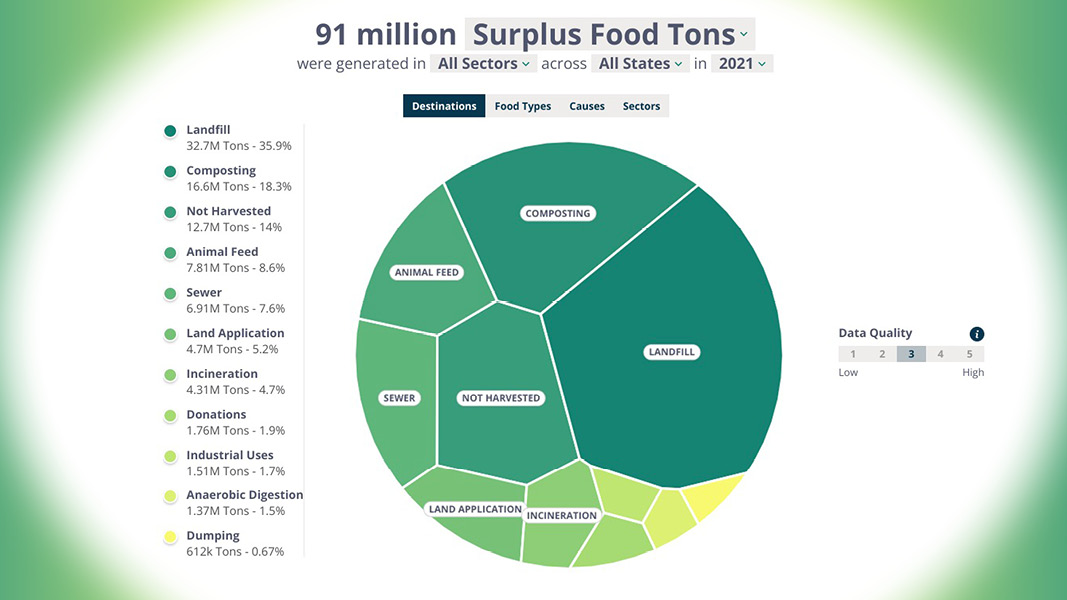Top: Graphic courtesy ReFED
ReFED released new estimates on the extent, causes, and impacts of food loss and waste in the United States, as well as an updated analysis of the solutions needed to fight it. The new data — updated to include estimates through 2021 — comes from the ReFED Insights Engine, an online hub for data and solutions that features a comprehensive examination of food waste in the U.S. According to ReFED, in 2021 the U.S. generated 91 million tons of “surplus food,” defined as all food that goes unsold or uneaten. “This represents 38% of U.S. food supply and contributes nearly 6% of the country’s annual greenhouse gas emissions,” notes a blog by ReFED on the update. “Close to 50% of this surplus was generated by households, with another 20% generated by consumer-facing businesses. And while 80% of total surplus food was edible parts, less than 2% was donated.”
ReFED’s analysis places the value of food that went unsold or uneaten at $444 billion in 2021, approximately 2% of U.S. GDP (Gross Domestic Product). This amount of food that goes uneaten is the equivalent of 149 billion meals’ worth of food that could have gone to the 10% of Americans who struggle with food insecurity, according to ReFED. “Although we had hoped that our analysis would show more progress in reducing food waste, we’re unfortunately at about the same levels as we were in 2019, making it even more imperative that food system stakeholders really dig in now and make the changes that are necessary to achieve a significant impact,” says Dana Gunders, ReFED’s Executive Director. “What’s heartening is that the amount of wasted food did level off, and actually appears to be declining slightly on a per capita basis. So perhaps we have moved past the point of ‘peak waste.’ But it will take everyone working together to keep the momentum going.”
ReFED also modeled 42 food waste solutions to determine which were the most effective at reducing loss and waste for each sector of the supply chain and based on key impacts, including total food waste diversion, greenhouse gas reductions, net financial benefits, and more. Implementing these solutions across the food system would cost approximately $18 billion annually, states the blog, but would “deliver an annual net economic benefit of $74 billion — a 4:1 return.”
This Insights Engine update constitutes both methodological improvements and the addition of 2020 and 2021 data, which covers the period that the food system was rocked by the COVID-19 pandemic. While the full impacts of COVID are yet to be uncovered, some of the major shifts in supply and demand between foodservice and retail sectors have been captured, says ReFED.













